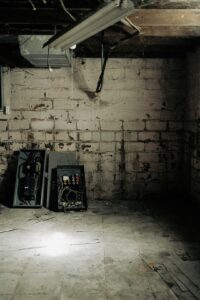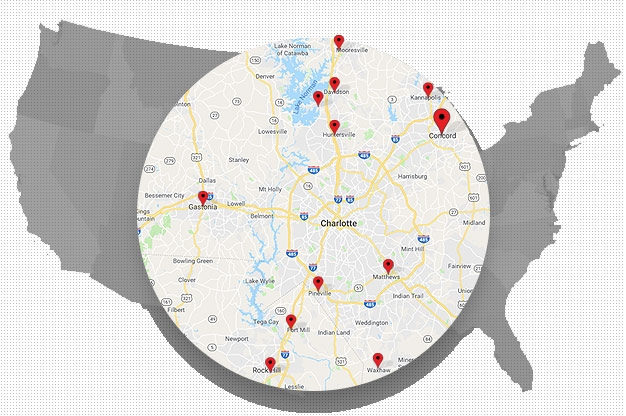How to Deal With Basement Moisture

Did you know that water damage affects 98% of basements?
If you’re a homeowner with a basement, it’s time to take action before it’s too late. Repairing water damage can be overwhelming and costly.
However, there are ways that you can prevent and reduce basement moisture. Keep reading to learn everything you need to know about waterproofing your basement.
Causes of Basement Humidity
There are a few reasons why basements tend to hold moisture. For one, they’re surrounded by dirt.
If you have a concert foundation, there could be hairline factors that occurred during the curing process when it was poured. If you have leaky pipes or a laundry unit in your basement, the exhaust vent may be broken
Reasons for Waterproofing
Even if you don’t spend a lot of time in your basement, you probably want it to be safe and habitable. With a dry basement, you won’t have to worry about mold and other bacteria growing. You’ll also reduce your electric bill if you have a dry basement.
You also may want to store some furniture or other items that you aren’t using in your basement, but you won’t be able to if it’s wet and humid. You’ll run the risk of ruining and damaging your antiques and valuables.
Things to Look Out For
If you see stains or yellowing on your walls or floors, that could be a sign of water damage. Condensation on the walls and windows also indicates that humidity levels are high inside. You may also see mold growing on furniture or carpet and eventually there will be an odor if it’s not taken care of properly.
Fix Gutters
If your basement moisture levels are increasing be sure to check your gutters. If they’re broken, cracked, or clogged, they won’t function properly.
The purpose of the gutters is to keep water away from your home’s foundation. If they are compromised, water could be draining incorrectly. Take the time to check and clean your gutters regularly or hire someone to help.
Check Pipes
Check your water and sewer pipes. If they’re broken, they could be causing you to have a damp basement. French drains are underground and if they are blocked by soil or roots it could also cause some damage.
It can be hard to identify faulty pipes because they’re typically hidden by walls and sinks. Take the time to inspect the pipes in your laundry room near the washer. You should be checking the sinks and toilets as well.
Consider Your Yard Grading
It’s important to have a proper drainage system that allows rainwater to flow away from your house. Even if you don’t live on a hill, there are systems that can be put in place that prevent water from pooling around your home. A landscaper will know how to regrade your yard so water doesn’t come to the base of your house when it rains or your sprinklers turn on.
Change Your Plants and Landscaping
Having vegetation and landscaping is part of owning a home. You probably want to have some plants and greenery to increase curb appeal.
However, it’s important that the plants around your home don’t need and hold a lot of water. You don’t want to have a lot of water soaking near your foundation.
Purchase a Dehumidifier
A basement can hold a lot of humidity and you may want to invest in a dehumidifier. It’s a device that you plug into the wall.
The machine pulls water out of the air, into a bucket by using cold coils. You’ll need to empty the bucket as it fills ups. There are some that have a tube that will push the water out and into a drain.
Wall and Flooring Seals
It’s likely your foundation is letting water into your basement. One way to combat water vapor and groundwater is to seal the walls with hydraulic cement or epoxy paint.
You can also invest in wall insulation that is water resistant. Another option is to use sub flooring that has a plastic backing.
Drain Tile System
A drain tile system can be installed on the exterior or interior of your home. Exterior drain tile systems are typically easier to install during the construction of the home, but they can be installed later.
A trench is dug around the foundation; the installers will then lay a perforated pipe down. All the excess water that is around the foundations will be pulled through the pipe into the sump pit. The sump pit then discards the water.
Installing an interior drain tile system is a much bigger project if done after the home is built. The system collects water from the soil and sends it to the sump pit, where it is then sent away from the foundation of your house.
Basement Moisture
While no one wants to think their home is going to flood or have leaks, it happens. It’s important to be proactive and invest in basement waterproofing before it’s too late.
The key to keeping basement moisture away is to ensure the foundation of your home is dry. As you can see there are many ways to reduce the amount of water, vapor, and humidity that gets into your home.
If you need help reducing the amount of water in your basement or if you have any questions, contact us. We have helped many homeowners secure their foundation and their property and we can help you too.
Recent Posts
- How Crawl Space Encapsulation Benefits the Environment – An Expert Guide
- 6 Ways Professionals Keep Your Crawl Space in Top Shape
- Structural Repair Solutions for Crawl Spaces, Basements, and Foundations
- Essential Crawl Space Repair Tips Every Homeowner Should Know
- The Importance of Radon Mitigation: Ensuring a Safe Living Environment for Homeowners
Categories
- Basement Mold
- Basement Waterproof Foundation
- Basement Waterproofing
- Crawl Space Dehumidifier
- Crawl Space Encapsulation Cost
- Crawl Space Repair
- Crawl Space Waterproofing
- Encapsulation
- Foundation Repair
- Foundation Waterproofing
- French Drains
- Leaky Basement
- Mold Remediation
- Mold Removal
- Radon
- Slab Jacking
- Sump Pump
- Uncategorized
- Vapor Barrier
- Water Leak
- Waterproofing
- White Mold
Archives
- June 2024
- May 2024
- March 2024
- January 2024
- June 2023
- May 2023
- April 2023
- March 2023
- February 2023
- January 2023
- December 2022
- November 2022
- October 2022
- September 2022
- August 2022
- July 2022
- June 2022
- May 2022
- March 2022
- February 2022
- January 2022
- December 2021
- November 2021
- October 2021
- September 2021
- August 2021
- July 2021
- June 2021
- May 2021
- April 2021
- March 2021
- February 2021
- January 2021
- December 2020
- November 2020
- October 2020
- September 2020
- August 2020
- July 2020
- June 2020
- May 2020
- April 2020
- March 2020
- February 2020
- January 2020
- December 2019
- November 2019
- October 2019
- September 2019
- August 2019
- July 2019
- June 2019
- May 2019

